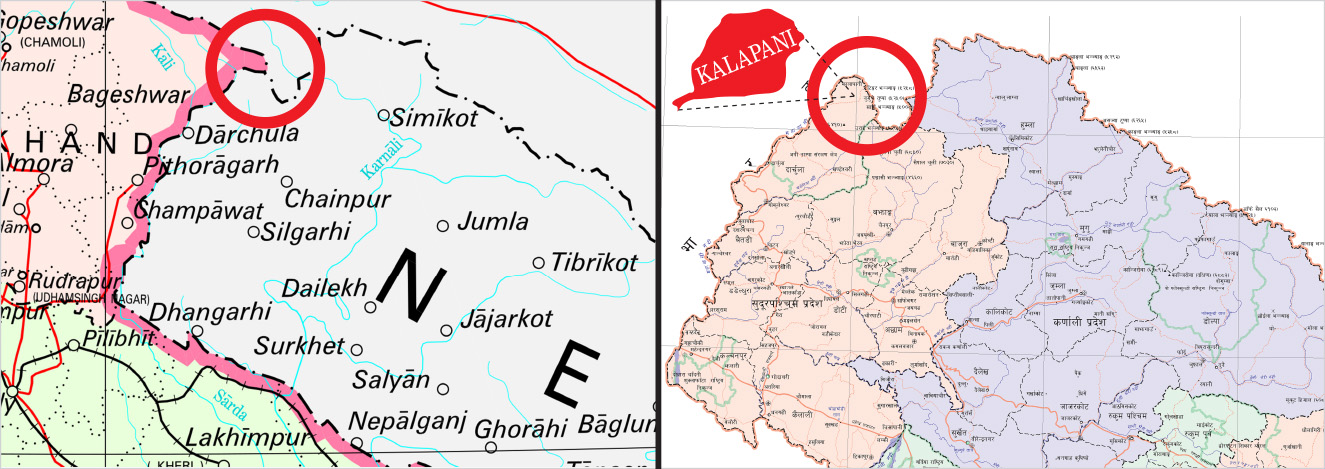The Kalapani Dispute between India and Nepal has suddenly caught the attention of global media. After Pakistan, Nepal has objected to a new map released by New Delhi that places the disputed area of Kalapani within India’s borders, saying it was “clear” the territory belonged to Kathmandu.

Earlier, Pakistan had also rejected the political map displaying Jammu and Kashmir within the territorial jurisdiction of India as “incorrect, legally untenable, void and in complete violation of the relevant United Nations Security Council resolutions”.
The Indian Ministry of Home Affairs on Sunday released a new political map after India formally split up the disputed Jammu and Kashmir state into two union territories, in line with an August move by the Narendra Modi government to rescind Kashmir’s autonomy.
Nepali officials disputed stretches of land between Nepal and India, like Kalapani and Lipu Lekh, which are placed inside Indian territory.
Indian Air Force Activates Forward Airbase Near Chinese Border
Nepal “is committed to protecting its international border,” the foreign ministry said in a statement on Wednesday. “Any border-related issue relating to the two friendly countries needs to be resolved through diplomatic channels on the basis of historical documents and evidence.” “The Nepal government will not accept any unilateral decision,” it added.
An 1816 treaty established Nepal’s western boundary with India along the Kali River, but border disputes have arisen over a discrepancy between the two sides over where the source of the river is located.
Nepal that time allowed India to post its troops in Kathmandu and on Nepal’s northern border, including Kalapani. India later withdrew from all other posts and stationed its troops on its side of the border of Kalapani. But later, India moved into Nepali territory, making Kalapani a disputed area between Nepal and India, according to Nepali experts.




